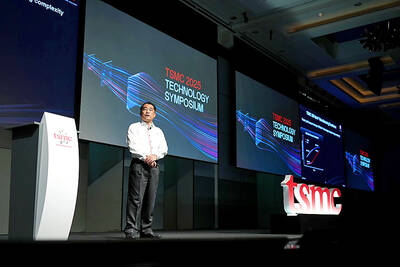A new study by the Project 2049 Institute — a Washington-based security and public policy think tank — quotes unnamed sources as saying that Taiwan’s spying operations against China “are the most effective in the world.”
Research fellow Ian Easton says in a footnote to the study that he learned this from “multiple interviews” in the Washington area and in Tokyo over the past year.
Providing advanced warning of Chinese preparations for an attack or providing warning that an attack might be under way are the highest priority for Taiwanese intelligence services, he says.
“Indications and warning (I&W) is essential during peacetime to prevent the People’s Republic of China (PRC) from obtaining the advantage of surprise,” Easton said in the study titled Able Archers — Taiwan Defense Strategy in the Age of Precision Strike.
“Taiwan’s timely and reliable I&W greatly contributes to good decisionmaking, allowing leaders to take appropriate steps ranging from increasing the readiness levels of forces to activating contingency plans,” Easton wrote.
Information about Chinese activities obtained from Taiwan’s early-warning radar systems is combined with data collected by other sources as a basis for action by Taiwanese and US decisionmakers, the study found.
In a rare glimpse into Taiwan’s intelligence gathering system, the study found that the nation operates a significant signals intelligence (SIGINT) system capable of gathering data on the “intentions, activities and capabilities” of China’s military and security forces.
“Taiwan exploits a large number of listening posts, its close proximity to China and its world-class information and communications technology expertise for collecting SIGINT,” it added.
The study says that the nation might have been the first in the world to establish a cyberwarfare command.
“Taiwan’s ability to penetrate PLA [People’s Liberation Army] systems benefits from its well-regarded computer hacking and computer security communities — as well as its commanding position on the supply chains that support the PRC’s electronics and computer technology industries,” the study says.
According to Easton, “anecdotal evidence” suggests that Taiwan’s computer hardware and software engineering talent continues to outpace competition in China.
He wrote that the nation’s government has a long history of leveraging its close cultural, linguistic and economic ties to China for collecting traditional human intelligence.
“Western media reports generally focus on the Chinese intelligence threat to Taiwan, while overlooking Taipei’s impressive track record of penetrating high-level targets in Beijing,” Easton wrote.
Counterintelligence experts and retired government officials have said that, despite the massive collection efforts aimed at it, Taiwan has been more successful at protecting classified information than South Korea and Japan.
Easton wrote that examples of intelligence successes include Taiwan’s collection of detailed information on China’s intercontinental ballistic missiles, the PLA’s Second Artillery Corps nuclear weapons division and Beijing’s construction of drones and airbases.
In addition, Easton wrote that Taiwan’s special operations forces might be sent to the US for SEAL, Delta Force, Green Beret, Ranger and Airborne training.
“During a full-scale conflict, Taiwan’s military would likely use its special operations forces to strike a limited number of high-value targets in China that it deems are essential to PLA operations,” he wrote.
These targets could include airfields, command posts, missile launchers and port facilities.
“It is thought that Taiwan special operations forces units have already prepared the battlefield through the use of covert reconnaissance operations and the exploitation of agents that Taiwan may have in Fujian Province and elsewhere inside the PRC,” the study says.
The study concludes that the constant pressure that Beijing puts on the White House, the US Department of State and the Pentagon “inevitably threatens to make any US decision regarding Taiwan difficult and politicized.”
In an effort to improve Taiwan’s security, the study calls on the administration of US President Barack Obama to relax its limits on visits to Taiwan by senior US military officers.
The study urges the White House to promote bilateral defense industry cooperation with Taiwan, leading to joint technology programs similar to those in place with Japan.
And it wants to see the Obama administration fully incorporate Taiwan into its rebalance to Asia.
“As in any relationship, trust is critical, especially when life and death and the fate of nations are at stake,” Easton wrote.

DEMOGRAPHICS: Robotics is the most promising answer to looming labor woes, the long-term care system and national contingency response, an official said Taiwan is to launch a five-year plan to boost the robotics industry in a bid to address labor shortages stemming from a declining and aging population, the Executive Yuan said yesterday. The government approved the initiative, dubbed the Smart Robotics Industry Promotion Plan, via executive order, senior officials told a post-Cabinet meeting news conference in Taipei. Taiwan’s population decline would strain the economy and the nation’s ability to care for vulnerable and elderly people, said Peter Hong (洪樂文), who heads the National Science and Technology Council’s (NSTC) Department of Engineering and Technologies. Projections show that the proportion of Taiwanese 65 or older would

Nvidia Corp yesterday unveiled its new high-speed interconnect technology, NVLink Fusion, with Taiwanese application-specific IC (ASIC) designers Alchip Technologies Ltd (世芯) and MediaTek Inc (聯發科) among the first to adopt the technology to help build semi-custom artificial intelligence (AI) infrastructure for hyperscalers. Nvidia has opened its technology to outside users, as hyperscalers and cloud service providers are building their own cost-effective AI chips, or accelerators, used in AI servers by leveraging ASIC firms’ designing capabilities to reduce their dependence on Nvidia. Previously, NVLink technology was only available for Nvidia’s own AI platform. “NVLink Fusion opens Nvidia’s AI platform and rich ecosystem for

Taiwan Semiconductor Manufacturing Co (TSMC, 台積電) yesterday said it is building nine new advanced wafer manufacturing and packaging factories this year, accelerating its expansion amid strong demand for high-performance computing (HPC) and artificial intelligence (AI) applications. The chipmaker built on average five factories per year from 2021 to last year and three from 2017 to 2020, TSMC vice president of advanced technology and mask engineering T.S. Chang (張宗生) said at the company’s annual technology symposium in Hsinchu City. “We are quickening our pace even faster in 2025. We plan to build nine new factories, including eight wafer fabrication plants and one advanced

‘WORLD’S LOSS’: Taiwan’s exclusion robs the world of the benefits it could get from one of the foremost practitioners of disease prevention and public health, Minister Chiu said Taiwan should be allowed to join the World Health Assembly (WHA) as an irreplaceable contributor to global health and disease prevention efforts, Minister of Foreign Affairs Lin Chia-lung (林佳龍) said yesterday. He made the comment at a news conference in Taipei, hours before a Taiwanese delegation was to depart for Geneva, Switzerland, seeking to meet with foreign representatives for a bilateral meeting on the sidelines of the WHA, the WHO’s annual decisionmaking meeting, which would be held from Monday next week to May 27. As of yesterday, Taiwan had yet to receive an invitation. Taiwan has much to offer to the international community’s